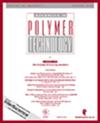
The findings suggest that rolling is a potentially effective technique for commercial applications in industries requiring high-performance polymer films. The solid-state rolling process is well-established for semicrystalline and amorphous polymers, but its application to segmented, two-phase polymers like thermoplastic polyurethane (TPU) which features physically cross-linked systems and excellent physical and mechanical properties, remains underexplored. This study aims to investigate the rolling of TPU under various conditions to address viscous relaxation and achieve maximum thickness reduction, producing thin sheets. The rolling characteristics were assessed by measuring the thickness changes of rolled specimens of two TPUs with different hard phase fractions, alongside thermoset polyurethane (PUR) with chemical cross-linking for comparative analysis. The results showed that the TPUs exhibited little plastic deformation at room temperature. The cold rolling test, conducted at a rolling speed of 0.5 m min−1 with a nominal reduction of 85%, indicated that the permanent reduction ratio was less than 35% for both TPUs. However, when the rolling speed was increased to 3 m min−1, the permanent reduction ratio increased to 67% and 60% for TPU ShA90 and TPU ShA85, respectively. This result indicates that at high rolling speeds, the thermal condition tends to change from isotherm to adiabatic in the rolling test. The maximum reduction ratio of 70% was achieved at a nominal reduction of 85% for TPU ShA90 at higher rolling temperatures and speeds.


